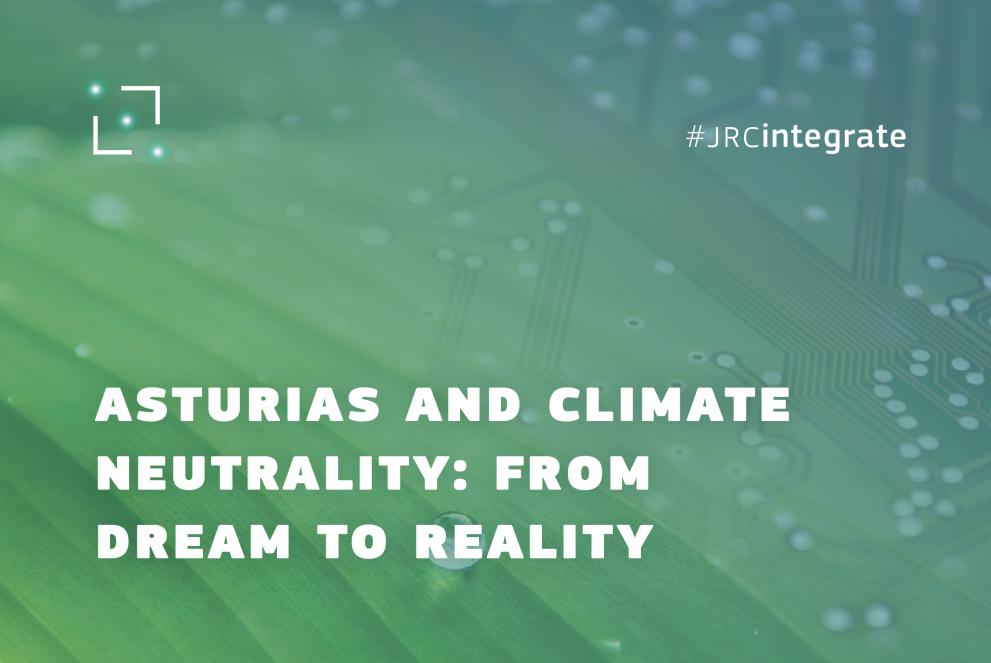
Ana Elena Fernández Monzón and Paz Palacio Fernández work for IDEPA, the institute for economic development of the Principality of Asturias.
Asturias takes sustainability seriously, a third of the region is environmentally protected. It is also among the leading regions in Spain when it comes to spending on social protection, health, and environmental protection. Besides, Asturias is a very well-connected region. In 2020, 87 % of the population had broadband coverage.
Still, the experts have plenty to do. “The eastern and western areas of the principality are steadily losing population and have a more rural and touristic character”, they explain.
80% of the population lives in the central area of the principality, where most of the industrial activity is concentrated. Industry entails a set of challenges.
Asturias has 17 factories affected by the EU Emissions Trading System. They require technical and global political solutions. “The trading system puts a 'cap' on the number of emission allowances that decrease year by year”, the experts add.
Thus the green transition is particularly challenging for the region. Plenty of jobs are at stake. “The weight of the industrial activity in the Asturian Gross Value Added is 18,8%. The process industry accounts for 3,451 enterprises and 14,981 employees. Unique leading companies that produce materials such as steel, zinc, glass, cement, pulp, are located in the region”, they explain.
Changes are already underway. Four coal-fired power stations are closing down, two others are being converted. This is a marked change from recent times. “In 2013, the production of the regional energy sector occupied the second position in Asturias's industrial activity, with a marked predominance of coal in the primary energy consumption structure”, they say.
As Asturias would have a hard time reaching climate neutrality due to its reliance on greenhouse gas-heavy industry, it could particularly benefit from the Just Transition Fund. The Fund supports people and places most affected by the transition to climate neutrality with investments that contribute to alleviate the socio-economic impacts (reskilling of people and economic diversification) and financing renewable energy, sustainable local mobility, digitalisation, circular economy, among others. The JRC showed that the deployment of renewable energy technologies alone can create up to 460 000 jobs by 2050 in the coal regions.
Smart Specialisation Strategies in Asturias
The region makes good use of the JRC’s Smart Specialisation Platform. Smart Specialisation Strategies (S3) identify niches of competitive strength, economic sectors especially suited for certain regions.
“Asturias S3 (2021-2027) established five areas of specialisation, one of which combines energy and circularity, and is thus clearly aligned with the Green Deal”, the experts say. Technologies such as generation, storage, integration, control and monitoring of renewable energies; innovative surfaces and coatings; industrial use of hydrogen; carbon capture and use; materials and energy recovery from waste; biological valorisation or carbon conversion will be deployed.
“The new S3 is a boost for Asturias Paradise Hub 4 Circularity, the regional knowledge hub that will enable the mastering of waste recovery technologies with a market orientation”, they add. This is sorely needed, as more than half of Asturias’s waste ends up in a landfill and is lost for recycling.
S3 also reinforces large projects in the decarbonisation of industry. “Hydeal Spain, an industrial joint venture will manage and finance the infrastructure for the supply of green hydrogen, produced from photovoltaic energy in different parts of Spain, to feed the steel and fertiliser production plants located in our region”, the experts point out.
When it comes to the digital transition, the region bets on smart grids and traceability.
“Digital solutions will help stakeholder’s collaboration putting in place innovative traceability methodologies and using big data marketplace platforms based on state-of-art technology”, the experts are hopeful. Tracking materials along the value chain can ensure that they are getting recycled. Materials marketplaces can bring together buyers and sellers of processed or recycled waste.
Partnerships for Regional Innovation
This year, recognising its record in driving the green transition forward, Asturias was selected as one of the 63 regions, seven cities and four Member States participating in the pilot project for Partnerships for Regional Innovation, an initiative developed together with the Committee of the Regions.
The initiative promotes transformative innovation with a particular focus on sustainability. Participants will share best practices and co-develop tools to mobilise sources of funding, connecting connect regional and national programmes to EU initiatives for achieving the twin green and digital transition. For starting out, they can get inspired by the set of recommendations in the JRC’s Partnerships for Regional Innovation Playbook.
The IDEPA experts are optimistic. “We are looking forward to joining forces and connecting with other EU regions”, they say. “We have identified the aspects of our regional strategy we aim to improve and therefore would especially benefit from interregional or international learning.”
In particular, they are interested in public-private collaboration, for example in ideas on managing public-private demonstration infrastructures within the Asturias Paradise Hub 4 Circularity project.
“We also would like to learn about tools oriented to add to the policy mix on environmental issues (legal, infrastructure, investments, R&D) and to find out how digitalisation will help the circular transition, including exploring examples of digital field labs for the process industry”, they conclude.
Details
- Publication date
- 22 July 2022
- Author
- Joint Research Centre

